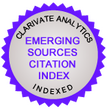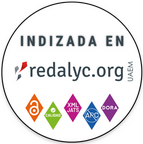CAXIAS DO SUL TECHNOLOGY INCUBATOR: TECHNOLOGICAL INNOVATION THROUGH THE TRIPLE HELIX
DOI:
https://doi.org/10.13058/raep.2014.v15n3.14Keywords:
technological innovation, Triple Helix, business incubatorsAbstract
The aim of this study was to identify how the Triple Helix concept is applied in the activities of the Caxias do Sul Society of Technology Incubation. To achieve this goal, semi-structured in-depth interviews were conducted at ITEC, the University of Caxias do Sul, Chamber of Industry, Commerce and Services of Caxias do Sul, Caxias do Sul City Hall and Comlink Electronic Equipments, one of the companies that was successfully incubated. Content analysis of the results showed that the agents act mainly through the provision of financial resources. Furthermore, the main benefits obtained by the University from this relationship are the return
on investment in the form of registered patents, attracting new students and recognition as a technological, entrepreneurial and innovative university. The perceived benefits for the industrial sector are training and development for businesses and entrepreneurs, while the municipal government perceives the reduced number of businesses failing and the financial returns, in the form of taxes, as benefits. The findings show that the Triple Helix concept developed by Etzkowitz (2009) plays a cooperative and participatory role in the Technology Incubator, even though it could be applied to more segments of society.
Downloads
Downloads
Published
How to Cite
Issue
Section
License
By publishing a manuscript in the journal Administração: Ensino e Pesquisa (RAEP), the authors declare that the work is of their exclusive authorship and therefore assume full responsibility for its content. The authors grant RAEP a non-exclusive rights license to use the work in the following ways:
(1) Sell and / or distribute the work in hard copies or electronic format.
(2) Distribute parts of the work as a whole to promote the journal through the internet and other digital and printed media.
(3) Record and reproduce the work in any format, including digital media.
Authors and readers are permitted to share the material, use it in classes, for presentations and also for other purposes, and to create new knowledge based on any RAEP publication, as long as the due credit is attributed to the original work and the respective author(s), through citations, references, and other means.
The journal adopts preventive measures to identify plagiarism using software designed for this purpose.
RAEP does not charge authors for the article submission nor for the publishing of approved articles.
In line with the journal's policies, each published article will be given a Creative Commons CC-BY 4.0 license.










